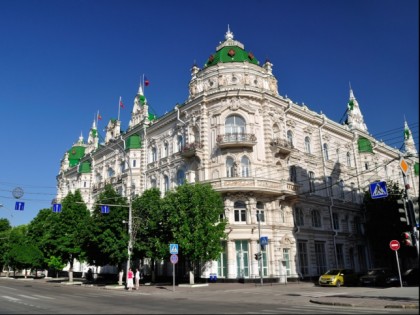Bolshaya Sadovaya Street - Rostov Broadway
Bolshaya Sadovaya Street for Rostov-on-Don is like Nevsky Prospekt for Saint Petersburg: it's the heart of the city. The street appeared in the city plan in 1781, but with no name. Three centuries later the street was called Zagorodnaya, and it lived up to its name: it was here where the garbage was collected and the sewage was drained. The street’s "reputation" was somewhat saved by the gardens on its odd side.
The street became Bolshaya Sadovaya in 1864. Here, kerosene lanterns began to appear, a water pipe was laid and the first electric tram was launched in the early 20th century. It was this street where the first Rostov cinema theatre arose. The houses in the street started to be settled by merchants and wealthy city people. Stores were opened in almost every house. Worth a look is the section of the Bolshaya Sadovaya, restricted by Budennovsky and Voroshilovsky avenues, where the most beautiful mansions have been preserved. In the mid-20th century, local youth dubbed this section the Rostov Broadway. The name has emerged after watching an American movie in the three cinema theatres located at the same section. It is here, on “Broadway” where the first Rostov style-hunters led a fast life. Bolshaya Sadovaya, the popular place for festivities of local residents and guests of Rostov, embodies three essentials of the city: the administrative (here the City Duma is located), the cultural and historical (Margarita Chernova House, several revenue houses, musical theater, philharmonic), and the entertainment (restaurants and fashion boutiques). This street is a must-visit when being in Rostov-on-Don: this is the place where you can easily picture to yourself what the city was like before.






































